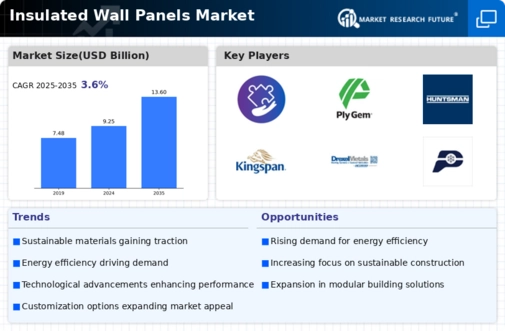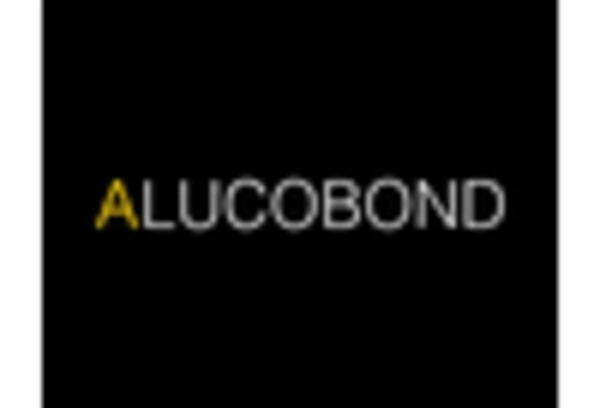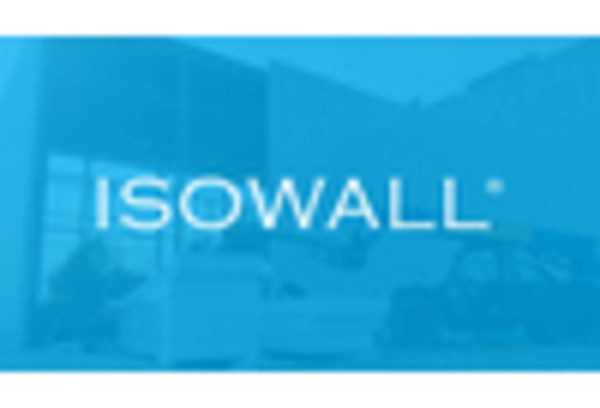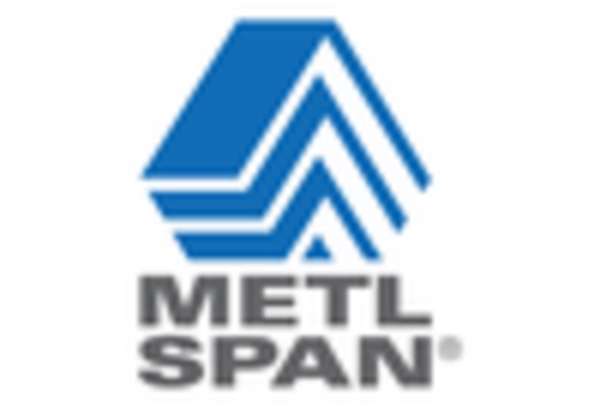Energy Efficiency Demand
The rising demand for energy-efficient building materials is a primary driver for the Insulated Wall Panels Market. As energy costs continue to escalate, both consumers and businesses are increasingly seeking solutions that reduce energy consumption. Insulated wall panels, known for their superior thermal performance, contribute significantly to energy savings in residential and commercial buildings. According to recent data, structures utilizing insulated wall panels can achieve energy savings of up to 30% compared to traditional building methods. This trend is likely to persist as regulatory frameworks increasingly emphasize energy efficiency, further propelling the growth of the Insulated Wall Panels Market.
Technological Innovations
Technological advancements in manufacturing processes are revolutionizing the Insulated Wall Panels Market. Innovations such as improved insulation materials, enhanced production techniques, and smart panel technologies are making insulated wall panels more effective and cost-efficient. These advancements not only improve the thermal performance of the panels but also reduce production costs, making them more accessible to a broader range of consumers. As manufacturers continue to invest in research and development, the Insulated Wall Panels Market is likely to witness a surge in product offerings that cater to diverse consumer needs.
Increased Construction Activities
The resurgence of construction activities across various sectors is significantly influencing the Insulated Wall Panels Market. With urbanization and population growth, there is a heightened need for residential, commercial, and industrial buildings. This demand is further amplified by infrastructure development projects, which often prioritize the use of advanced materials like insulated wall panels for their efficiency and durability. Recent statistics indicate that the construction sector is projected to grow at a compound annual growth rate of over 5% in the coming years, thereby creating substantial opportunities for the Insulated Wall Panels Market.
Regulatory Support for Green Building
Government regulations promoting sustainable construction practices are fostering growth in the Insulated Wall Panels Market. Many regions have implemented stringent building codes that require or incentivize the use of energy-efficient materials. These regulations often align with broader environmental goals, such as reducing carbon footprints and enhancing building performance. For instance, the adoption of green building certifications has surged, with many projects now requiring insulated wall panels to meet energy efficiency standards. This regulatory support not only drives demand but also encourages innovation within the Insulated Wall Panels Market, as manufacturers strive to meet evolving standards.
Growing Awareness of Sustainable Practices
There is a growing awareness among consumers and builders regarding the importance of sustainable construction practices, which is driving the Insulated Wall Panels Market. As environmental concerns become more pronounced, stakeholders are increasingly prioritizing materials that minimize ecological impact. Insulated wall panels, with their ability to enhance energy efficiency and reduce waste, align well with these sustainability goals. Market surveys indicate that a significant percentage of builders now consider sustainability as a key factor in material selection. This shift in mindset is expected to bolster the demand for insulated wall panels, further propelling the Insulated Wall Panels Market.


















Leave a Comment